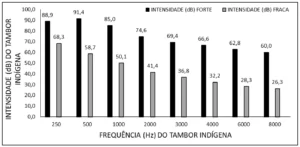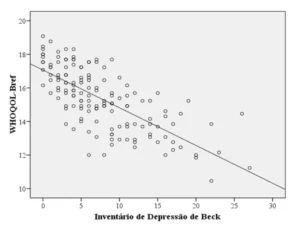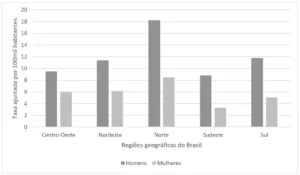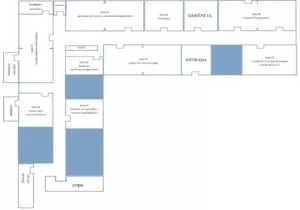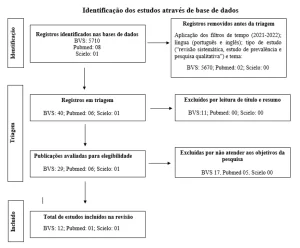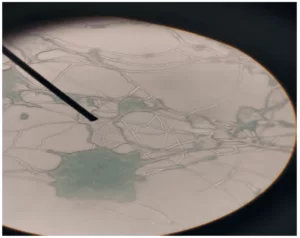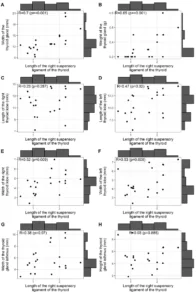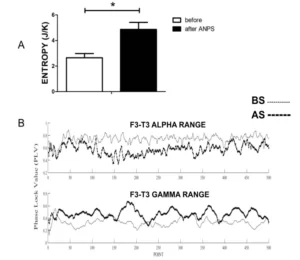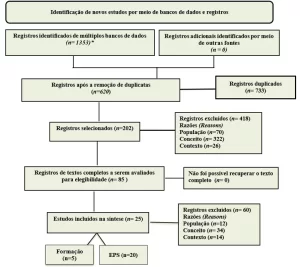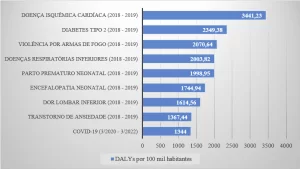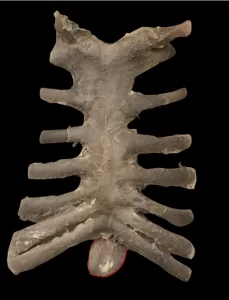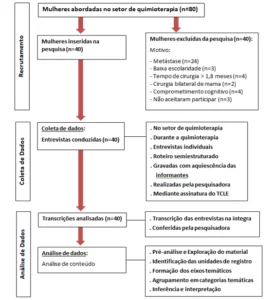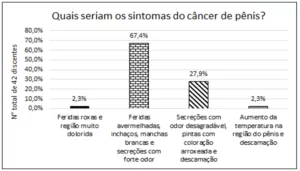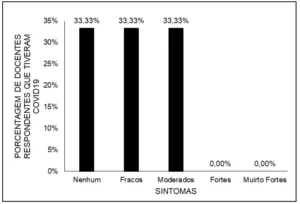ORIGINAL ARTICLE
CRUZ NETO, Manoel Samuel [1], NEGRÃO, Renata de Jesus da Silva [2], PANZETTI, Tatiana Menezes Noronha [3], VILHENA, Andrezza Ozela [4], RAMALHO, Jully Grace Freitas de Paula [5], FECURY, Amanda Alves [6] DENDASCK, Carla Viana [7], DIAS, Cláudio Alberto Gellis de Mattos [8], MOREIRA, Elisângela Claudia de Medeiros [9], SOUZA, Keulle Oliveira da [10], RIBEIRO, Amanda Camille Gomes Silva [11], GODINHO, John Anderson Gato [12], RAIOL, Tatiane Lima [13], OLIVEIRA, Euzébio de [14]
CRUZ NETO, Manoel Samuel, et al. Cardiorespiratory arrest: performance of the nursing team in an intensive care unit. Revista Científica Multidisciplinar Núcleo do Conhecimento. Year. 07, Ed. 03, Vol. 04, pp. 145-158. March 2022. ISSN: 2448-0959, Access link: https://www.nucleodoconhecimento.com.br/health/performance-of-the-nursing, DOI: 10.32749/nucleodoconhecimento.com.br/health/performance-of-the-nursing
ABSTRACT
Introduction: The advances in medicine, eradication and control of infectious diseases, as well as improvements in quality of life in recent decades, have brought greater longevity to the population, with the epidemiological transition of diseases taking place, with emphasis on Non-communicable Chronic Diseases, such as coronary heart disease. This research aims to identify the clinical parameters that the nursing team uses in the recognition of Cardiopulmonary Arrest in an Intensive Care Unit. Method: This is a descriptive research, with a qualitative approach, carried out in the intensive care center of a private hospital, located in the city of Belém, State of Pará. The participants were nursing professionals, who answered a semi-structured form, to analyze the actions and knowledge in emergencies in Cardiorespiratory Arrest by the clinically serious user. Results and Discussion: It can be observed that the participants identify a scenario of cardiorespiratory arrest through discomfort, facial expressions, pallor, difficulty breathing, vital signs, decreased cardiac output and saturation and absence of pulse. However, in relation to the behavior in the attendance, the research proved to be unsatisfactory in several approached aspects, it identified lack of knowledge of the nursing team in the taking of conducts and insecurity in the accomplishment of procedures. Conclusion: The performance of the nursing team in Cardiorespiratory Arrest must continue to be disseminated, aiming at greater safety and autonomy of these professionals, aiming at quality care, the nursing team must be able to attend to this type of clinical emergency, so that they can participate of constant training and updates, so that they become qualified and provide safe and effective care.
Keywords: Nursing team, Knowledge, Critical Care, Cardiac Arrest, Intensive Care Unit.
1. INTRODUCTION
Cardiorespiratory Arrest (CRA) is defined as the sudden and abrupt interruption of systemic circulation that, when not treated immediately, can cause irreversible neurological damage or even progress to death (SILVA; ARAÚJO AND ALMEIDA, 2017). It is an emergency that requires a lot of technical knowledge, since the early identification and the reasons that lead a user to a CRA becomes crucial for a good prognosis. Therefore, the provision of nursing care requires speed, efficiency, scientific theoretical knowledge and skill in practical actions, as well as synchronized teamwork (NACER; BARBIERI, 2015).
Interventions during cardiorespiratory arrest must be carried out in such a way as to avoid the patient’s death, and it is up to the health professional present to reestablish the necessary circulation and oxygenation, in order to avoid brain injuries. As this is an unexpected complication, CRA requires scientific and practical knowledge to be applied effectively and safely, in addition to a balanced relationship between the responsible team, respecting the established and updated protocols (LISBOA; FERREIRA; GOMES, 2016).
The nursing team represents the largest number of professionals within the Intensive Care Unit (ICU). The role of the nurse and nursing technician in the ICU permeates several aspects, from obtaining patient information, carrying out detailed anamneses, checking the clinical picture, interpreting exams, even in urgent and emergency care of various natures ( CURADO, 2017).
The role of nursing with the patient is conducted by technical responsibilities, guided by the Nursing Care Systematization plan (SAE)[15], norms and procedures that guide the performance of actions aimed at analyzing and interpreting information about the patient’s health and the measures that may influence the adoption of health practices, since it is nursing that identifies the first signs and symptoms of the worsening of the patient’s clinical condition, since they are the professionals who live closest to the patient (CARVALHO; FONSECA; RUZI 2015). This category of professionals must be attentive to any signs of visible clinical alterations in hospitalized patients, especially when they are affected by comorbidities related to the cardiovascular system such as Heart Failure, Arrhythmias, Cardiomyopathies, Pericarditis, among others, which lead to CRA (OLIVEIRA; REZENDE; MORAES, 2016).
Bearing in mind that working with critically ill patients further exposes the health professional to tense and delicate situations, as well as requires nursing professionals to act with skills and offer quality care. The causes that can lead the patient to evolve into a CRA condition are varied, ranging from circulatory shock or even cardiovascular disease. However, being in a hospital environment helps, in a way, the nursing team when it comes to speeding up the assistance provided due to the patient’s monitoring of the team’s care (MENEZES; SOUZA, 2015).
Nursing work in the ICU is essential for the effective quality of care, workers face daily demands and demands from patients, often from doctors, among others. For the nursing professionals themselves, their performance is highlighted by their ability to understand the context and identify the needs of patients (LOPES et al., 2017).
In this context, this work was based on the following problem: “Do nursing professionals who work in Intensive Care Units have sufficient knowledge of the identification and conduct to be performed in cases of cardiorespiratory arrest? ”. Bearing in mind that, through understanding the complexity of CRA, it is necessary that the entire care team be trained and updated, as whoever identifies the situation, requests the presence of the team and initiates the Cardiopulmonary Resuscitation (CPR) maneuvers. Professionals must be qualified and trained to care for CRA victims. Assuring the patient and family members of health care free of damage resulting from malpractice, negligence or recklessness (SOCIEDADE BRASILEIRA DE CARDIOLOGIA, 2019).
A standardized training of health professionals in dealing with this clinical situation can have favorable prognostic consequences. Nurses are educators when they act in favor of prevention and health promotion, and the professional facing a team that acts in the maneuvers established in a CRA must offer an adequate level of qualification, as it is a highly complex procedure (RANGEL; OLIVEIRA, 2017).
In this way, this research aims to identify clinical parameters that nursing uses in the recognition of CRA in an Intensive Care Unit, in a private hospital, located in the city of Belém – PA, as well as to analyze and verify the level of knowledge, attitude and practice of the nursing team with regard to actions and maneuvers applied in cases of CRA in the ICU.
2. METHOD
This is a descriptive exploratory research with a qualitative approach. The study took place in a private hospital, located in the city of Belém, State of Pará. It is the oldest operating hospital institution in the municipality of Belém.
The research consisted of the nursing team that make up the hospital’s staff, working in the morning and afternoon shifts in the Intensive Care Unit sector, totaling 10 participants.
The research included nurses and nursing technicians, with at least one year of training and who were currently working in the hospital’s CTI sector for at least one year, of both sexes and who agreed to sign the Free and Informed Consent Term – TCLE[16]. After approval by the Ethics Committee, the authorization process for the research was initiated with the co-participating institution. The participants were in random order, individually accommodated in the place provided by the hospital. A semi-structured form with objective and subjective questions was used to analyze CRA actions.
For the beginning of data collection, the participants were first characterized, information such as: name, age, sex, time working at the ICU and time working at the present institution were investigated. The data collection technique was developed following the steps of BARDIN (2011), which consists of a set of methodological communication tools that highlights the social context in which the words and their meanings are being applied.
Data analysis treatment took place in three basic stages, which included pre-analysis, analytical description and inferential interpretation, where cell phones with coupled cameras were provided for a few moments. The research strictly followed the ethical precepts recommended by Resolution Nº 510, OF April 07, 2016, of the National Health Council (NHC). The resolution aims to ensure the rights and duties of the research participants, which were obeyed throughout the entire elaboration until its completion, compliance with the regulatory standard, by a favorable opinion consubstantiated by the CEP no 3.629.434 of the Centro Universitário Fibra.
3. RESULTS AND DISCUSSION
Regarding the characterization of the interviewed professionals, 2 (20%) nurses and 8 (80%) nursing technicians participated in the research, totaling 10 participants, which made it possible to identify the clinical parameters that nursing uses in the recognition of CRA, as well as, to get to know the nursing team about the actions and maneuvers in relation to the research topic. Table 1 shows the characterization of the profile of the participants.
Chart 1 – Profiles of the nursing team working in the Hospital’s Intensive Care Unit.
| INTERVIEWEE | Genre | Age | Professional category | Time since graduation (Years) |
Time working in ICU (Years) |
| A | F | 45 | Technician | 9 | 9 |
| B | M | 40 | Nurse | 15 | 11 |
| C | F | 33 | Technician | 5 | 3 |
| D | F | 32 | Technician | 9 | 1 |
| E | M | 41 | Nurse | 7 | 7 |
| F | M | 50 | Technician | 23 | 23 |
| G | F | 40 | Technician | 12 | 4 |
| H | F | 24 | Technician | 2 | 2 |
| I | M | 32 | Technician | 8 | 8 |
| J | M | 30 | Technician | 6 | 6 |
Source: Own authorship, 2021.
After reading and rereading the transcripts of the interviews, three analytical categories were established and evaluated and discussed, with the following emerging: Skills in the context of cardiac arrest; Actions in CRA care and Systematization of nursing care in CRA.
4. SKILLS IN THE CARDIORESPIRATORY ARREST SCENARIO
The patient needs fast and effective care in a CRA, to increase his chances of survival. Thus, early recognition of cardiac arrest, followed by Basic Life Support (BLS) skills are essential strategies for patient survival (QUILICI et al., 2015).
With this, it is understood that health professionals must be supported by methodologies and practices that subsidize actions and effectively provide early intervention. In this category, responses referring to the parameters that are identified when the patient goes into cardiorespiratory arrest and what provides greater ability in the face of an episode of CRA were grouped (AMERICAN HEART ASSOCIATION, 2020).
With the indication of questions with summarized answers, it can be seen that there is a lack of confidence in the team, which prevails in 70% among professionals to act in this situation, which can irreversibly harm the good care provided to the victim. Evidenced in the responses obtained:
[…] Começa pela saturação, abaixo de 90, já se deve ficar em alerta, a pressão arterial, pois o paciente fica hipotenso, mas mesmo se verifica a saturação, ele vai dando sinal, pois o paciente já fica com desconforto respiratório, (…). Tem todo um processo, mas o estado clinico ajuda, sinais vitais cai e o paciente fica desconfortável. (C)
Casanova (2016), mentions that in the ICU the issue that generates repercussions is of an ethical nature, about when to stop the Cardiopulmonary Resuscitation (CPR) maneuvers or start them. Still within this category, the degree of difficulty in assisting CRA was noted. As can be evidenced through the answers obtained by the interviewees. Among them, the following stand out:
[…] Não sei. Eu faria massagem cardíaca e “ambuzar” e fazer as medicações que o médico pede, a adrenalina. Na hora, a gente só faz o que o médico manda. (D)
Seeking to know the nursing team and the actions performed by the team in the face of CRA, in this category the reports of skills, even if adequate, proved to be ineffective in care. Reinforcing the fact, a team prepared as a whole and harmonious is what adds up to the skills to be performed (KAWAKAME; MIYADAHIRA, 2016).
When caring for CRA victims, sometimes professionals are faced with difficulties, who are disorganized and conflicted, resulting in a decrease in the effectiveness of care. It is essential that health professionals adopt conducts in a CRA, because if taken in seconds they save the life of the affected person (MARKUS, 2013).
5. ACTIONS IN CRA SERVICES
Urgent care, in the ICU environment, requires immediate action from health professionals to achieve success in the care, fast and multidisciplinary interventions can guarantee a longer survival of the patient in a CRA (CASANOVA, 2016).
According to what was analyzed, it is possible to verify regarding the speech of the research participants, when responding during the assistance to the patient in Cardiopulmonary Arrest, that there is an order of procedures to be followed, which shows knowledge of 80% of the participants about the protocols of Cardiopulmonary resuscitation.
Verificar sinais vitais, chamar a equipe, iniciar compressões torácicas, pegar o carro de emergência para fazer todo o controle de PCR, mas de fato, inicialmente, verificar o pulso, se notar ausência de pulso, iniciar compressões torácicas. A equipe também pode atuar administrando as drogas medicamentosas, conforme a orientação médica, como a adrenalina, e fazer as alternâncias em tempos da compressão torácica. (B)
In the hospital environment, commonly, the first professionals who adopt CRA care behaviors are nursing professionals, the speed and competence of the team are factors that contribute to the success of resuscitation and patient survival (CASANOVA, 2016).
Faced with this question, the nursing team needs to organize the functions and articulate their skills, the procedures that will be performed according to the priority and/or request. In order for the success of nursing conduct to be achieved, one must aim at the only objective, which is the patient’s survival, acting with practical theoretical knowledge (RODRIGUES, 2015).
According to Polit and Beck (2018) there are gaps in CRA care, the sequence of basic life support and the ventilation-compression relationship, many nursing professionals are still unaware of the immediate conducts after detection.
According to the AHA guidelines (2020), CPR maneuvers performed by rescuers must follow the sequence: perform chest compressions; perform the opening of the airway; perform ventilation and defibrillation. It is fundamental in CRA care to ensure safe and adequate care following international recommendations.
6. SYSTEMATIZATION OF NURSING CARE IN CRA
In this category, answers of the techniques and action of the SBV were grouped, only one respondent correctly placed the flowchart present in the interview instrument. It is worth confirming the importance of the BLS, thus arriving at the definition of the chain of survival, a practical method providing the basis for a sequence of actions that will be taken in the face of this event (FONSECA, 2014).
The results were obtained:
[…]
1- Check answer
2- Call help
3- Take the emergency car
4- Check breathing and pulse
5- Defibrillator
(E);
[…]
1- Check breathing and pulse
2- Call help
3- Check answer
4- Take the emergency car
5- Defibrillator
(G);
BLS, for laypersons, comprises the steps: check response, call for help, take the emergency car, check breathing and pulse and use the defibrillator, monitor the patient (QUILICI et al., 2015).
Currently, with advances in technology, as well as studies, all these factors bring with them an idea that at some point the teams involved in health care, whether in intensive or extra-hospital care, the members had or will have to employ care following the protocol for a CRA (AMERICAN HEART ASSOCIATION, 2020).
The intervention must be systematized by the nursing team in an effective way, aiming to reverse a sudden unexpected illness, keeping their organic functions preserved (SOUSA, 2016). It is essential that permanent education be provided to health professionals, providing an articulation and updating of theory with practice, due to the constant changes in care protocols. This update aims to promote safe and organized care (CASANOVA, 2016).
The nursing professional needs to identify, reach and meet physiological demands, including quality of life. The Systematization of Nursing Care (SAE) allows the expansion of understanding, with the purpose of facilitating the planning of care in an integrated way and demarcating the needs of the patient. The SAE is a care instrument that requires commitment and creativity from nurses in the execution and elaboration of health strategies, seeking to maintain favorable conditions for the systems that comprise it (MENETRIER; PRESTES, 2017; ALVES; BARBOSA; FARIA, 2013).
7. FINAL CONSIDERATIONS
Faced with the CRA approach, the nursing team aims to be effective and able to care for the patient, therefore, nursing care is extremely important and it will be up to the professional to be sure that the care is being performed correctly.
The result of the research was unsatisfactory in several aspects addressed, it identified lack of knowledge of the nursing team in taking conducts and insecurity in carrying out procedures according to the AHA guidelines in the face of a cardiorespiratory arrest, signaling the need for training for all professionals employees who deal with patient care in the ICU, in a way that integrates scientific theory and practice.
REFERENCES
ALVES, Cristiele Aparecida; BARBOSA, Cinthia Natalia Silva; FARIA, Heloisa Turcatto Gimenes. Parada cardiorrespiratória e enfermagem: o conhecimento acerca do suporte básico de vida. Cogitare Enferm. Volume: 18. São Paulo: Cogitare Enferm, 2013. Disponível em: https://revistas.ufpr.br/cogitare/article/view/32579. Acesso: 11 mai. 2021.
American Heart Association. Executive Summary: 2020 American Heart Association Guidelines for Cardiopulmonary Resuscitation and Emergency Cardiovascular Care. v. 142, n. 16. 2020. Disponível em: https://www.ahajournals.org/doi/10.1161/CIR.0000000000000918. Acesso: 11 mai. 2021
BARDIN, Laurence. Análise de conteúdo: a visão de Laurence Bardin. Edição: 70. São Paulo: Revista e educação, 2011.
CASANOVA; Jocilene de Carvalho Miraveti et al. Parada cardiorrespiratória e ressuscitação cardiopulmonar: vivências da equipe de enfermagem sob o olhar da técnica do incidente crítico. Volume: 9. Recife: Revista de enfermagem UFPE online, 2016. Disponível em: https://periodicos.ufpe.br/revistas/revistaenfermagem/article/view/10439. Acesso em: 07 mai 2021.
CARVALHO, Rafael Almeida; FONSECA, Neuber Martins; RUZI, Roberto Araújo. Parada cardiorrespiratória durante a gestação: revisão da literatura.. Minas Gerais: Rev. Med. Minas Gerais, v. 24. 2014. Disponível em: http://rmmg.org/artigo/detalhes/1197. Acesso em: 08 mai. 2021.
CURADO, Ana Carolina de Castro. Fundamentos semiológicos de enfermagem. Editora e Distribuidora Educacional S.A. p.176. Londrina.2017. Disponível em: <http://www.santaisabel.com.br/upl/pagina_adicional/Download_-_FNDAMENTOS_SEMIOLOGICOS_DE_ENFERMAGEM-11-09-2019_21-34-29.pdf>. Acesso em: 07 mai 2021.
KAWAKAME, Patrícia Moita Garcia; MIYADAHIRA, Ana Maria Kazue. Avaliação do processo ensino-aprendizagem de estudantes da área da saúde: manobras de ressuscitação cardiopulmonar. Rev. Escola de Enfermagem USP. Volume: 49. São Paulo. 2016. Disponível em: https://www.scielo.br/j/reeusp/a/PtVrJwTLhF3qwXHzHkP5dHs/?lang=pt. Acesso em: 08 mai. 2021
LISBOA, Rose Mary Ferreira da Silva et. al. Ressuscitação cardiopulmonar de adultos com parada cardíaca intra-hospitalar utilizando o estilo Utstein. Edição: 28. Rio de Janeiro: Rev Bras Ter Intensiva, 2016. Disponível em: https://www.scielo.br/j/rbti/a/RT5vD4p6DtZHBtLyzPWnCXq/abstract/?lang=pt. Acesso em: 10 mai. 2021.
LOPES, Guilherme Fonseca et. al. Processo de enfermagem como ferramenta de cuidado. Editora: UDESC. Universidade do Estado de Santa Catarina, v. 2, p. 207-209, nov. 2017. Disponível em: https://www.udesc.br/arquivos/ceo/id_cpmenu/1752/anais_2_CONSAI_1MICENF_15293511791346_1752.pdf. Acesso em: 08 mai. 2021
MARKUS, Andrea Machado. As ações da equipe de enfermagem no atendimento ao paciente em Parada Cardiopulmonar em emergências. Edição: 9. Florianópolis: Revista Brasileira de
Cardiologia, 2013. Disponível em: https://repositorio.ufsc.br/handle/123456789/107527. Acesso em: 10 mai. 2021
MARQUES, Patrícia Figueiredo et al. Produção de enfermagem sobre parada cardiorrespiratória. Edição: 3. Bahia: Revisão integrativa de Saúde Pública, 2016. Disponível: https://rbsp.sesab.ba.gov.br/index.php/rbsp/article/view/1289. Acesso em: 10 mai. 2021.
MENETRIER, Valdomiro Jordão; PRESTES, Nonato. Jesus. Conhecimento da equipe de enfermagem de uma unidade de terapia intensiva adulta sobre a parada cardiorrespiratória. Volume: 19. Londrina: Biosaúde, 2017. Disponível em https://www.publicacoeseventos.unijui.edu.br/index.php/salaoconhecimento/article/view/10112/8772 Acesso: 10 mai. 2021
MENEZES, Bárbara Galvão; SOUZA, Bárbara Gomes. Capacitação dos enfermeiros na reanimação de pacientes da UTI. Volume: 1. Salvador: Revista Eletrônica Atualiza Saúde, 2015. Disponível em http://atualizarevista.com.br/article/v1-n1-capacitacao-dos-enfermeiros-na-reanimacao-de-pacientes-da-uti/. Acesso: 10 mai. 2021
NACER, Daiana Terra; BARBIERI, Ana Rita. Sobrevivência a parada cardiorrespiratória intra-hospitalar: revisão integrativa da literatura. Edição: 3. São Paulo: Revista Eletrônica de Enfermagem, 2015.
OLIVEIRA; Mateus Silva; REZENDE, Paulo Cury; MORAES, Ricardo Casalino Sanches. Envelhecimento Cardiovascular e Doenças Cardiovasculares em Idosos. Rev. Medicinanet. v.02. Disponível em: https://www.medicinanet.com.br/conteudos/revisoes/3159/envelhecimento_cardiovascular_e_doencas_cardiovasculares_em_idosos.htm. Acesso: 10 mai. 2021.
POLIT, Denise Ferreira; BECK, Cheryl Tatano. Fundamentos de pesquisa em enfermagem: avaliação de evidencias para a prática da enfermagem. São Paulo: Artmed, 2018. Disponível em: https://www.amazon.com.br/Fundamentos-Pesquisa-Enfermagem-Avalia%C3%A7%C3%A3o-Evid%C3%AAncias/dp/8582714890
QUILICI, Ana Paula et al. Enfermagem em cardiologia. Edição: 29. São Paulo: Atheneu, 2015.
RANGEL; Ana Maria; OLIVEIRA, Maria Lúcia. O papel do enfermeiro no atendimento da parada cardiorrespiratória na unidade de terapia intensiva adulto. Revista Uningá Review. v. 4,n.1,p.66.2017.Disponível:http://revista.uninga.br/index.php/uningareviews/article/view/529. Acesso em: 10 mai. 2021.
RESOLUÇÃO Nº 510. CONSELHO NACIONAL DE SAÚDE. 2016. Disponível em: http://conselho.saude.gov.br/resolucoes/2016/Reso510.pdf. Acesso em: 07 mai 2021.
RODRIGUES, Josimar Henrique Sampaio. Benefícios na prevenção de lesão neuronal pós-parada cardiorrespiratória (PCR) na hipotermia terapêutica: breve revisão. Volume: 6. Minas Gerais: Revista Eletrônica Gestão & Saúde, 2015. Disponível em: https://periodicos.unb.br/index.php/rgs/article/view/3014 Acesso: 10 mai. 2021.
SILVA, Karla Rona da; ARAÚJO, Sibele Aparecida SANTOS Tomás e ALMEIDA, Wander Soares de. Parada Cardiorrespiratória e o Suporte Básico de Vida no Ambiente Pré-Hospitalar: Revista O Saber Acadêmico. Santa Maria, v. 43, n.1, p. 53-59, Abril 2017. Disponível em: https://periodicos.ufsm.br/revistasaude/article/view/22160/pdf. Acesso em: 10 mai. 2021.
SOCIEDADE BRASILEIRA DE CARDIOLOGIA. Atualização da Diretriz de Ressuscitação Cardiopulmonar e Cuidados Cardiovasculares de Emergência. 2019. Disponível em: https://www.scielo.br/j/abc/a/7hYYNQk4XHwckmPbFcFD7kP/?lang=pt. Acesso em: 10 mai. 2021.
APPENDIX – FOOTNOTE
15. Sistematização da Assistência em Enfermagem (SAE).
16. Termo de Consentimento Livre e Esclarecido (TCLE).
[1] Master in Nursing. Lecturer and Researcher at Faculdade Brasil Amazônia – FIBRA.
[2] Nurse, Master in Nursing, Professor at Centro Universitário FIBRA, Brazil.
[3] Nurse, Master in Nursing, Professor at Centro Universitário FIBRA, Brazil.
[4] Nurse, PhD in Parasite Biology in the Amazon by Instituto Evandro Chagas.
[5] Nurse, Master in Nursing, Professor at the Universidade do Estado do Pará.
[6] PhD in Tropical Diseases. Professor and Researcher at the Federal University of Amapá, AP. Collaborating Researcher at the Núcleo de Medicina Tropical da UFPA (NMT-UFPA).
[7] PhD in Psychology and Clinical Psychoanalysis. Ongoing PhD in Communication and Semiotics at the Pontifícia Universidade Católica de São Paulo (PUC/SP). Master’s Degree in Religious Sciences from Universidade Presbiteriana Mackenzie. Master in Clinical Psychoanalysis. Degree in Biological Sciences. Degree in Theology. He has been working with Scientific Methodology (Research Method) for more than 15 years in the Guidance of Scientific Production of Master’s and Doctoral Students. Specialist in Market Research and Health Research. ORCID: 0000-0003-2952-4337.
[8] PhD in Theory and Research of Behavior. Professor and Researcher at the Instituto Federal do Amapá – IFAP.
[9] PhD in Tropical Diseases. Professor and Researcher at the Universidade do Estado do Pará, Belém (PA), Brazil.
[10] Master in Anthropogenic Studies in the Amazon – (PPGEAA/UFPA) and Researcher – Grupo de Pesquisa em Saúde, Sociedade e Ambiente (GPSSA/UFPA).
[11] Nursing student, Centro Universitário FIBRA, Brazil.
[12] Nursing student, Centro Universitário FIBRA, Brazil.
[13] Nursing student, Centro Universitário FIBRA, Brazil.
[14] PhD in Medicine/Tropical Diseases. Lecturer and Researcher at the Universidade Federal do Pará – UFPA. Collaborating Researcher at the Núcleo de Medicina Tropical – NMT/UFPA, Belém (PA), Brazil.
Submitted: March, 2022.
Approved: April, 2022.

